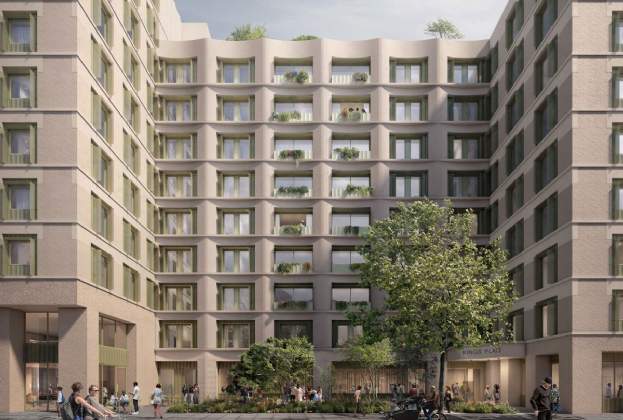Source Savills Research
What are we seeing?
There are 2.2 million full-time students in the UK, equivalent to around three students per available bed in purpose-built student accommodation, creating a shortfall that puts an enormous and growing strain on the PRS.
According to the latest available data from Higher Education Statistics Agency (HESA), 2020/21 saw the UK’s total full-time student population grow by 8 per cent. 2021 was also a record year for UCAS applicants, reaching almost 750,000. Of these, there were over 560,000 acceptances – the second-highest number on record.
At the same time, the number of PRS properties available to rent is shrinking. Rightmove data indicates a substantial decline compared with the 2017-19 average, while the RICS survey of letting agents shows a sustained gap between tenant and landlord enquiries.
With a substantial lack of stock available – rents have soared, growing 10 per cent across the mainstream rental market in 2022 alone.
As a result, many universities have had to take extreme action. The University of York and the University of Bristol have housed students in neighbouring towns and cities, the University of Edinburgh has converted common rooms into dorms with bunk beds, and the University of Glasgow has put students in hotels. Meanwhile, students in Durham queued overnight outside lettings agents to secure accommodation.
Where is the issue the most acute?
Of the 44 UK cities with more than 15,000 full-time students, a third (29 cities) saw particularly strong growth in first-year student numbers in 2020/21, while listings of properties available to let compared to the pre-pandemic average have fallen – most apparent in Paisley, Lancaster and Sunderland.
Out of these cities, 24 have also seen strong rental growth of more than 7 per cent in September 2022, while London, Manchester and Salford all saw more than 15 per cent rental growth, all compounded by an acute shortfall in PBSA beds relative to student numbers, most notably in London.
Nonetheless, even cities with declining student numbers are not immune. 14 of these cities (with more than 15,000 students) have seen falling numbers of first years, including Nottingham, Reading and Bath. However they have also seen larger proportional falls in the available rental listings and have still seen high rental growth of more than 7 per cent.
What is the solution?
There are two ways to alleviate the strain on the PBSA sector – decrease demand and/or increase supply.
With the university-aged population projected to grow over the next decade, we would need to see a substantial drop in the participation rate just to keep the intake the same as it was pre-pandemic. Given strong application figures, this seems unlikely in the short term.
On the flip side of the supply/demand coin is the need to deliver more purpose-built student accommodation, and in line with this, more universities will need to consider nomination agreements with the private sector to meet student demand.
From an investor perspective, there’s an obvious opportunity to meet demand by providing a product at a price point that is attractive to domestic students, but this is not always easy in practice with the well-known challenges around the price of land and high construction costs essentially setting a minimum rental level.
UK higher education is a strong sector with impressive global reach. Ensuring students can be accommodated close to their chosen university, for their full university experience, is vital for retaining the sector’s favourable reputation.
Further information
Contact Nicholas Gibson and James Hanmer
Savills Student Accommodation services
.jpg)
.jpg)


.jpg)